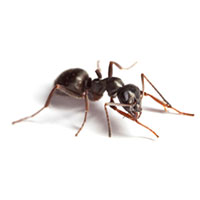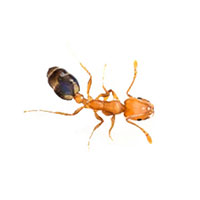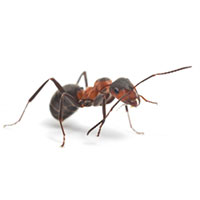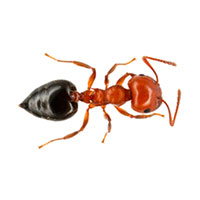Pavement Ants in Wisconsin
Pavement ants get their name for their habit of nesting beside and under sidewalks, driveways, and foundations. When they build their nests, they leave behind mounds of dirt on sidewalks and pavements. Found throughout Wisconsin, they are particularly common in urban areas. New colonies are established after mating flights in mid-summer. As household pests, pavement ants are attracted to both sweet and greasy substances. Due to their close proximity to homes and buildings, these ants often make their way indoors in search of food.
Pavement Ant Habitat
True to their name, pavement ants are most often found under or near sidewalks, patios, and driveways. Nests are located in the soil or out in the open under pavement, stones, masonry, and wood. Generally occurring at ground level, pavement ant workers use pipes or wires to move upward. In commercial buildings, they enter structures through expansion joints and cracks in the slab to search for readily available sources of food and heat. Although they prefer to be outdoors in warm weather, during winter, they are more likely to be found in homes or buildings near a heat source such as a radiator or heating duct.
Pavement Ant Behaviors, Threats, or Dangers
Pavement ants are nuisance pests and cause unsightly mounds of sand on driveways, patios, sidewalks, or basements. Although they can bite and possess a stinger, pavement ants rarely bite humans. These ants do not pose a public health risk, however, they can contaminate food as they forage. They will scavenge for any kind of edible crumb and will invade buildings to find food resources for their substantial colonies. When nests aren’t treated in time, pavement ants will continue to spread into new populations. If a pavement ant infestation is suspected, it is best to consult a professional ant exterminator.
Need help with Pavement Ants?
We'll call you! Leave your information below.





